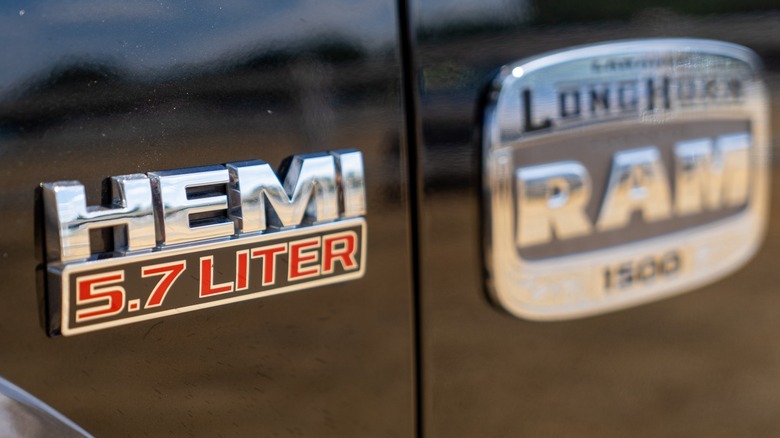
Three Sixty Images/Shutterstock
By Ron King/
Following the demise of the 425-horsepower 426 HEMI V8 in 1971, Chrysler mothballed the hemispherical combustion chamber design and its awe-inspiring HEMI nameplate for over 30 years. While the second-generation 426 HEMI clearly earned its rank as a high-horsepower engine, the newer 5.7- and 6.1-liter third-gen HEMI V8s provide impressive horsepower ratings as well as improved fuel economy and reliability.
Third-generation HEMI engines have powered a lot of Chrysler vehicles since the 5.7-liter HEMI arrived on the scene in 2003 Ram trucks. While some years are better than others, the 5.7 HEMI is often regarded as the best HEMI ever put into a Ram truck.
Chrysler’s Street and Racing Technology team developed the 6.1-liter HEMI for use in high-performance versions of Chrysler 300C, Dodge Challenger, Dodge Charger, Dodge Magnum, and Jeep Cherokee ranging from 2005 through 2010 for most models. The 6.1 HEMI powered models carrying the SRT8 badge were a force to be reckoned with, ranking as one of the most powerful engines ever put into a Dodge Challenger.
Chrysler 5.7 HEMI
Following its success in the RAM pickup truck lineup, Chrysler found other applications for its popular 5.7-liter (345 cubic-inch) HEMI in 2005. However, the 2005 5.7 HEMI found in Dodge Charger R/T, Dodge Magnum R/T, and Chrysler 300C received some improvements over the truck engine.
While the truck and car 5.7 HEMI engines shared the same 3.917-inch cylinder bores and 3.58-inch crankshaft stroke, the car version had its throttle body mounted to the front of the intake manifold and employed the Multi-Displacement System (MDS) to improve fuel economy by deactivating half the engine’s cylinders during low-power demand activities like cruising down a flat highway.
Chrysler gave the 5.7 HEMI a makeover in 2009, with better flowing intake and exhaust ports, larger intake valves, variable camshaft timing for improved performance and efficiency, stronger connecting rods, and 20cc smaller 65cc combustion chambers delivering a 10.5:1 compression ratio.
Early 5.7 HEMI horsepower ratings were respectable for the time, with 335 horsepower in SUVs and 345 horsepower in RAM trucks. However, the advancements made in 2009 increased car and SUV horsepower to a maximum of 375 and up to 395 horsepower in RAM trucks.
[Featured image by IFCAR via Wikimedia Commons | Cropped and scaled | Public Domain]
What is the difference between a 5.7 HEMI and a 6.1 HEMI?
First, there’s the obvious 0.4-liter displacement difference between the 5.7 and 6.1 (370 cubic-inch) HEMIs due to the latter’s larger 4.055-inch diameter cylinder bore. Second, with development by a group called Street and Racing Technology, you’d rightfully expect the 6.1 HEMI to contain premium components. Hemmings reports the list of those special 6.1 HEMI components includes an aluminum intake manifold mated to D-shaped port aluminum cylinder heads with 74cc combustion chambers, 2.08-inch diameter intake valves, 1.6-inch diameter sodium-filled exhaust valves, and a forged steel crankshaft.
While the 6.1 HEMIs cast iron engine block is painted the same HEMI Orange hue and produces a familiar 425 horsepower as its 426 cubic-inch predecessor, it’s important to remember that during the muscle car era, horsepower ratings were gross values while the 6.1 HEMI ratings are SAE Net values.
Another difference between the 6.1 and most other modern HEMI engines equipped with automatic transmission is the absence of MDS. While you might be inclined to think of that as a negative, MotorTrend offers an opposing opinion. They explain that while a V8 HEMI cruising down the highway with four deactivated cylinders is more efficient, the possibility of a failed MDS lifter due to oil contamination often makes the system less desirable.
[Featured image by DSC_6981 via Wikimedia Commons | Cropped and scaled | CC BY-SA 2.0]